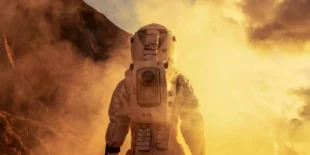The analysis of a sample from the asteroid Ryugu sparked excitement among scientists when signs of life were detected. However, that excitement quickly faded when it was determined that the life forms found in the sample were actually from Earth, not space.
The sample, collected during Japan’s Hayabusa2 mission in 2019, was returned to Earth in 2020. Scientists took great care to prevent contamination and ensured strict protocols were followed to minimize any risk of earthly contamination.
Despite these precautions, researchers at Imperial College London discovered microbial life in the sample. According to Matthew Genge, the lead researcher, while the microorganisms seemed to be living and thriving in the sample initially, their presence indicated they had likely colonized the sample just before it was analyzed and were of terrestrial origin.
Genge noted that while the exact type of bacteria couldn’t be identified without DNA analysis, it was probable that they were common soil-dwelling bacteria, like Bacillus, which are known to form filaments. He expressed surprise at the discovery, as microbes typically do not appear on meteorite samples, which are usually polished to avoid contamination. However, he emphasized that even a single microbial spore could lead to colonization.
In their study, titled “Rapid Colonisation of a Space-Returned Ryugu Sample by Terrestrial Microorganisms,” the researchers noted no immediate signs of contamination on the sample. However, within a week of exposure to Earth’s atmosphere, filaments resembling terrestrial microbes appeared on the sample’s surface. This observation highlighted the ability of microorganisms to survive and thrive on extraterrestrial materials, especially when organic material is present, as it is on Earth.
Genge also pointed out that this finding raises concerns about the potential contamination of space environments during missions. He warned that while terrestrial microbes are skilled at rapid colonization, it is crucial for scientists to acknowledge contamination when it occurs. The challenge arises when scientists mistakenly claim that extraterrestrial features found in specimens are genuinely pristine and not influenced by earthly contamination.


